InishKea Islands
The islands are rich in amazing scenic beauty, rare wild life and numerous Archaeological sites.
The island of Inishkea North is best known for its early Christian monastery which flourished here between the 6th and 10th centuries AD.
The Baileys
The most conspicious features of the island are three large dunes, known locally as the Baileys - the Bailey Mór, Bailey Beag and Bailey Dóighte located on the east of the island.
A brief excavation of the largest mound, the Bailey Mór revealed the ruins of a number of buildings. Among other cross-slabs on the mound there is one unusual slab of a stylized crucifixion scene. The other cross-slabs vary in design and may be dated to the late 7th to 8th centuries AD. As the island itself is relatively flat, the Baileys provide excellent views of the west coast of Erris and expanse of the Atlantic Ocean.
Other Monuments
On the north-east coast of the island there are the possible remains of a number of Megalithic Tombs, built during Neolithic (Stone Age) period c.3500 to c.2000 BC.
On the south-west of the island there are the remains of a small church, dedicated to St Colmcille in the early Christian period and a purple ink which was used to illuminate the manuscripts was exported from here to other monastic sites.
There are 15 - 20 slabs in total on the islands.
On Inishkea South there are cross-slabs and pillars. One to the north of the harbour is a stone with a cross inscribed on it, located at the centre of two circles of stones. This appears to be a Pre-Christian monument 'christianized' at a later date.
Rusheen, a tidal island to the east of Inishkea South was once the site of a whaling station, the remains are still evident today. This was set up by the Norwegians in 1907.
Flora and Fauna
The Inishkea Islands are composed of gneiss ridges (200 million years old) covered with sand forming a unique, if harsh, habitat for the many species of flora and fauna which inhabit them. While the Inishkeas contain more than 200 plant species, the dominant vegetation type on both the islands is a Plantago-Sweard type of plant community consisting of shortgrasses.
The Inishkea islands are of major importance to both resident and migrating birds with over 85 types having been recorded. The Mute Swan, the Peregrine and the endangered Corncrake are just some of the birdspecies which benefit from the peace and protection of the islands. The short grasses of the islands have led the Inishkeas to be of international importance as wintering ground for Barnacle Geese.
The lowlying coasts of the islands are home to large numbers of grey seal while sharp-eyed visitors can occasionally see Dolphins and Whales out to sea.
Whaling & Whalebone
-
At Ionad Deirbhile Heritage Centre there is a vertebra and a rib of a large whale on display which was washed ashore at Blacksod lighthouse.
- History of the Arranmore Whaling Company (1907) and the Blacksod Whaling Company (1909) can also be viewed.
History of the Lighthouses
-
The history of the 4 lighthouses - Blackrock (1864), Blacksod (1866), Broadhaven (1845) and Eagle Island (1839). This shows the great maritime importance of the local coastline.
- Also on display a ship's storm lantern, lens and a bouy courtesy of the Commissioners of Irishlights.
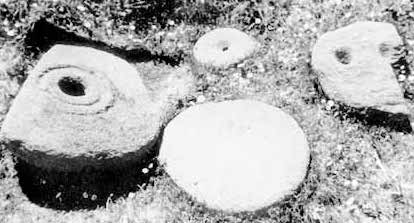
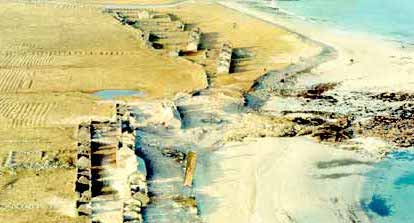
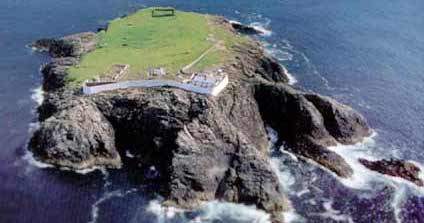
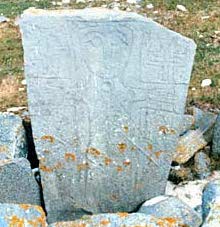
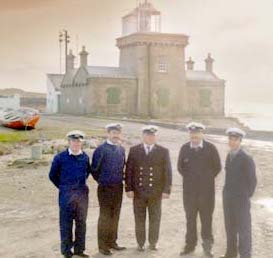
Ionad Deirbhle Eachléim Heritage Centre
Eachléim (Aughleam)
Belmullet
County Mayo
+353 (0) 97 85727
eolas@ionaddeirbhile.ie
www.ionaddeirbhile.ie
Sneak Peek
Some interesting items can be viewed here
- 3 Smoothing Irons
- Blacksod Lighthouse
- Churn
- Claw Anchor
- Corncrake
- Creel
- Cross Abbey
- Currach
- Deirbhiles Twist
- Driller 1
- Driller 2
- Family on Duvillaun Island
- Frying pan
- Glosh Tower
- Handmade leather shoes
- Kettle
- Last
- Lighthouse effects
- Old National School house on Iniskea Island
- Poitín still on Duvillaun Island
- Pot Oven Lid
- Quilt
- Saint Deirbhle's Church
- Saint Deirbhle's Grave
- Saint Deirbhle's Holy Well
- Scuffler
- Ship's anchor light
- Skillet with lid
- Slane
- Sugan
- Weaving outside an old cottage on Duvillaun Island